
The candela is the unit of luminous intensity in the International System of Units (SI). It measures luminous power per unit solid angle emitted by a light source in a particular direction. Luminous intensity is analogous to radiant intensity, but instead of simply adding up the contributions of every wavelength of light in the source's spectrum, the contribution of each wavelength is weighted by the luminosity function, the model of the sensitivity of the human eye to different wavelengths, standardized by the CIE and ISO. A common wax candle emits light with a luminous intensity of roughly one candela. If emission in some directions is blocked by an opaque barrier, the emission would still be approximately one candela in the directions that are not obscured.
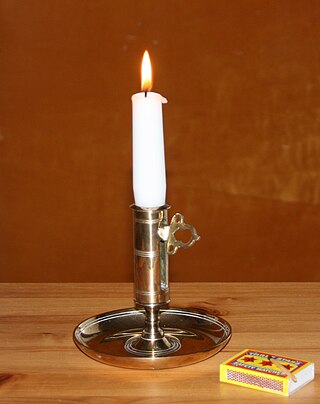
A candle is an ignitable wick embedded in wax, or another flammable solid substance such as tallow, that provides light, and in some cases, a fragrance. A candle can also provide heat or a method of keeping time.
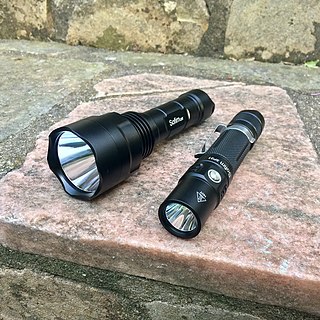
A flashlight (US), or torch (CE) is a portable hand-held electric lamp. Formerly, the light source typically was a miniature incandescent light bulb, but these have been displaced by light-emitting diodes (LEDs) since the early 2000s. A typical flashlight consists of the light source mounted in a reflector, a transparent cover to protect the light source and reflector, a battery, and a switch, all enclosed in a case.
In photometry, luminous intensity is a measure of the wavelength-weighted power emitted by a light source in a particular direction per unit solid angle, based on the luminosity function, a standardized model of the sensitivity of the human eye. The SI unit of luminous intensity is the candela (cd), an SI base unit.

Photometry is the science of the measurement of light, in terms of its perceived brightness to the human eye. It is distinct from radiometry, which is the science of measurement of radiant energy in terms of absolute power. In modern photometry, the radiant power at each wavelength is weighted by a luminosity function that models human brightness sensitivity. Typically, this weighting function is the photopic sensitivity function, although the scotopic function or other functions may also be applied in the same way. The weightings are standardized by the CIE and ISO.
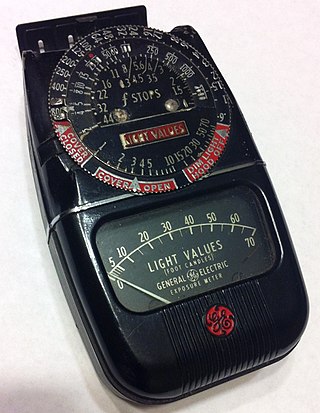
A foot-candle is a non-SI unit of illuminance or light intensity. The foot-candle is defined as one lumen per square foot. This unit is commonly used in lighting layouts in parts of the world where United States customary units are used, mainly the United States. Nearly all of the world uses the corresponding SI derived unit lux, defined as one lumen per square meter.

In photometry, luminous flux or luminous power is the measure of the perceived power of light. It differs from radiant flux, the measure of the total power of electromagnetic radiation, in that luminous flux is adjusted to reflect the varying sensitivity of the human eye to different wavelengths of light.
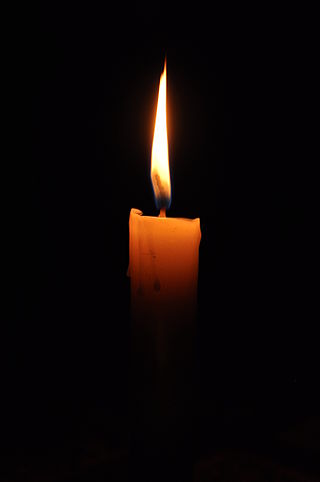
Candlepower is a unit of measurement for luminous intensity. It expresses levels of light intensity relative to the light emitted by a candle of specific size and constituents. The historical candlepower is equal to 0.981 candelas. In modern usage, candlepower is sometimes used as a synonym for candela.
The lumen is the unit of luminous flux, a measure of the total quantity of visible light emitted by a source per unit of time, in the International System of Units (SI). Luminous flux differs from power in that radiant flux includes all electromagnetic waves emitted, while luminous flux is weighted according to a model of the human eye's sensitivity to various wavelengths, this weighting is standardized by the CIE and ISO. One lux is one lumen per square metre.

Amyl acetate (pentyl acetate) is an organic compound and an ester with the chemical formula CH3COO[CH2]4CH3 and the molecular weight 130.19 g/mol. It is colorless and has a scent similar to bananas and apples. The compound is the condensation product of acetic acid and 1-pentanol. However, esters formed from other pentanol isomers (amyl alcohols), or mixtures of pentanols, are often referred to as amyl acetate. The symptoms of exposure to amyl acetate in humans are dermatitis, central nervous system depression, narcosis and irritation to the eyes and nose.
A foot-lambert or footlambert is a unit of luminance in United States customary units and some other unit systems. A foot-lambert equals 1/π or 0.3183 candela per square foot, or 3.426 candela per square meter. The foot-lambert is named after Johann Heinrich Lambert (1728–1777), a Swiss-German mathematician, physicist and astronomer. It is rarely used by electrical and lighting engineers, who prefer the candela per square foot or candela per square meter units.
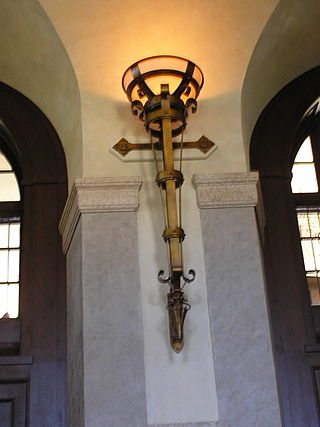
A sconce or wall light is a decorative light fixture that is mounted to a wall. The sconce is a very old form of fixture, historically used with candles and oil lamps.

A daytime running lamp is an automotive lighting and bicycle lighting device on the front of a roadgoing motor vehicle or bicycle, automatically switched on when the vehicle's handbrake has been pulled down, when the vehicle is in gear, or when the engine is started, emitting white, yellow, or amber light. Their intended use is not to help the driver see the road or their surroundings, but to help other road users identify an active vehicle.
German searchlights of the Second World War were used to detect and track enemy aircraft at night. They were used in three main sizes, 60, 150 and 200 centimetres. After the end of the First World War, German development of searchlights was effectively stopped by the Treaty of Versailles, it resumed in 1927. At the outset of the war, searchlights were combined with acoustic direction-finders, with the direction-finders guiding the searchlights to the right part of the sky, where they swept until they found the target. Later in the war, the searchlights were radar-directed. The searchlights used extremely high-powered carbon arc lamps.

The Argand lamp is a type of oil lamp invented in 1780 by Aimé Argand. Its output is 6 to 10 candelas, brighter than that of earlier lamps. Its more complete combustion of the candle wick and oil than in other lamps required much less frequent trimming of the wick.
Aviation obstruction lighting is used to enhance the visibility of structures or fixed obstacles which may conflict with the safe navigation of aircraft. Obstruction lighting is commonly installed on towers, buildings, and even fences located in areas where aircraft may be operating at low altitudes. In certain areas, some aviation regulators mandate the installation, operation, color, and/or status notification of obstruction lighting. For maximum visibility and collision-avoidance, these lighting systems commonly employ one or more high-intensity strobe or LED devices which can be seen by pilots from many miles away from the obstruction.

A tealight is a candle in a thin metal or plastic cup so that the candle can liquefy completely while lit. They are typically small, circular, usually wider than their height, and inexpensive. Tealights derive their name from their use in teapot warmers, but are also used as food warmers in general, e.g. fondue.

Friedrich Heinrich Philipp Franz von Hefner-Alteneck was a German electrical engineer and one of the closest aides of Werner von Siemens. He is largely remembered for the invention of the Hefner lamp, which provided the measure of luminous intensity used in Germany, Austria and Scandinavia from 1890 to 1942. The measure was called the Hefnerkerze (HK). The Hefnerkerze was superseded in the 1940s by the modern SI unit, the candela.
The Carcel is a former French unit for measuring the intensity of light. The unit was defined in 1860 as the intensity of a Carcel lamp with standard burner and chimney dimensions, which burnt colza oil at a rate of 42 grams of colza oil per hour with a flame 40 millimeters in height.












